Wow! What a can I say? My 1st OJT at Pulau Semakau is definitely different. Not due to the location nor due to the fauna & flora we encounter there. Its different cos its very wet and do not mean that the tides are high. Its due to wet weathers. Yes! It was my 1st raining experience of at any Inter-Tidal Area.
The day started early, however by the time we reached Pulau Semakau its already 7+am. As the tides are already rising, we had to rush to the shore.
(My group from the public lead by Robert)
(The patch of mangrove along the way)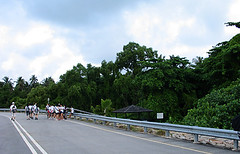
(Reaching the entrance to the secondary forest)
It take us abt 5-10mins to reach the shore. Doesn't it feels like entering a whole new dimension?
Since our group is the "Sea Star" group, Robert instantaneously found and picked up a Sand Sifting Star, Archaster typicus. [Thanks Ron for the I.D)
Sand Sifting Star with the help of its spines moves over the sandy bottom of the ocean sifting through sand for food. The spines also enable it to burrow into the sand to hide or digest its food.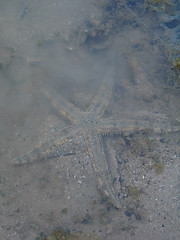
There are lots of sponges around the area. Most of them are brownish but if u look carefully, some of them do have lovely colors like green or blue. Sponges are the simplest form of multicellular animals. They don't have tissues or organs. Sponges belongs to a group of phylum Porifera which uses a system of pores (also called ostia) and canals for general mode of feeding , respiring, excreting wastes while whipping water in through openings in their body walls.
Their in-ability to contract their siphons (opening) is the one easy way to separate them from the at-times similar Trunicate (Sea Squirts) which have contractable openings.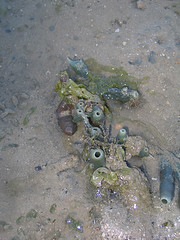
(Most probably a Halichondria sp., not too sure)
As we pushed forward, we had to move in a single file to cross the large patch of Seagrass Lagoon.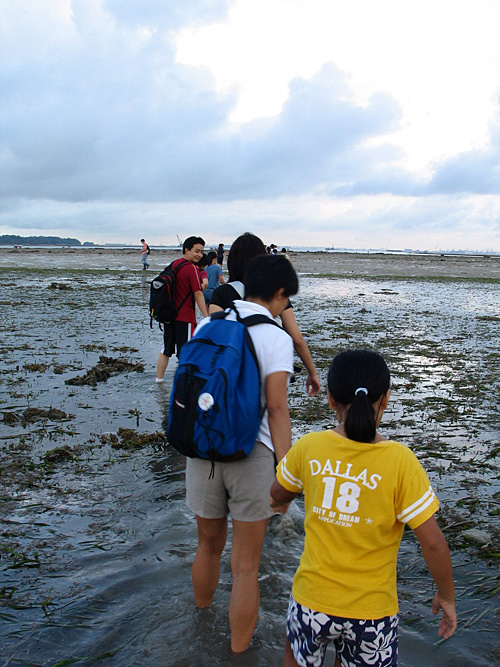
At the 1st stop that was created by our friendly hunter seekers, there were scallop, Spider Conch and a Moon Snail.
Commonly also known as Shellfish. Scallop has with two opposing shells that are hinged together. They are bivalves thus are filter-feeders, sifting food through their gills, which also function as respiratory organs. Bivalves are commonly found burrowed into sand and are capable of discharging some powerful jets of water from their exhalant siphons.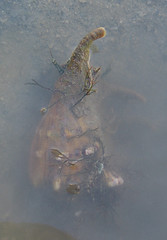
Spider conchs, Lambis lambis are voracious carnivores and may also feed on algae. Spider conch are easily indentified and hunted for it lovely unusual shell.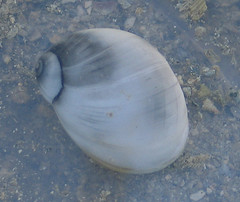
Moon Snail (Naticidae family) is also carnivorous. They feed mainly on shelled molluscs, including other snails and bivalves, and are well-known because they use their buccal appartaus and radula to drill a hole through their prey's shell, leaving a very characteristic countersunk drill hole in the shell.
Another common sightings beside the sponges will definitely have to be the Anemone. Made popular thanks to the movie "Finding Nemo" where the star of the movie was borned. There are over 20 known families of Sea Anemones. Anemone's bodies consist of two layers of cells separated by a jelly-like substance. Their outer layer contains muscles and stinging cells, while their inner layer is used to digest food. They are primarily a predator, but most species contain the symbiotic algae zooxanthellae that will provide nourishment under proper lighting.
Some anemone especially the Bubble-Tip Anemone commonly found to have some naturally symbiotic relationship Clownfish. Do check out wildfilm blog where they spotted a false clownfish on a common anemone.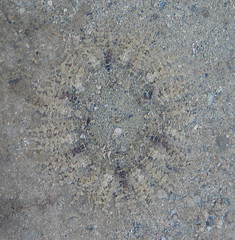
(Probably a Phymanthus sp)
(Probably a Condylactis species)
We spotted quite a number of corals. Including soft coral and various hard coral. Corals are responsible for building the many beautiful reefs around the world and many are not aware that they too can make lovely coral reef in Singapore. Check out wildfilm recent trip to Raffles Lighthouse.
(Leathery Coral, Sacrophyton sp.) [p.s. Thanks Ron for the I.D.]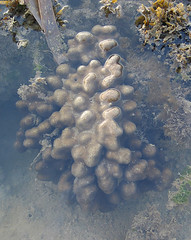
(Probably a Porites spp. or Encrusting Montipora)
When we turn around to move near to the edge of the area known as the "coral rumble", Robert spotted a Tubeworm also known as Feather Duster Worm for its similar looking fan-shaped crown (radiole).
The Feather Duster is a very interesting animal especially to those who have not seen one before. This is probably due to how it protects itself when disturbed where it will quickly pull in its radiole into the tube. Lots of interactivity there. However do note that if it is severely stressed, it will discard its crown athough it can grow back again. The main purpose of their radiole is to filter out small floating organisms, which it will directs toward its mouth, located at the center of the crown. 
(Probably a Sabellastarte sp)
Soon after explaining the function of the feather duster's radiole, from a distance we heard Luan Keng shouting at us to warn that she receive a lightning warning and we are to clear to safe area in 15 mins. Upon hearding her warning, I looked up to the sky and notice from the far end, DARK clouds are gathering and instantaneously snapped this pix below.
(Dark clouds approaching our direction. Pix taken about t 5-10mins the heavy downpour came. Ron has a few pix of the rain in his blog.)
While heading back, we realised that the next stop for us is actually the "STAR" of the whole trip, The Knobbly Sea Star. As we were already been chased to head back asap, din managed to spend much time on it and it sure was a pity that we had to end the whole guided walk way earlier than expected. Should the weather were good, I'm sure we could have seen alot more interesting animals.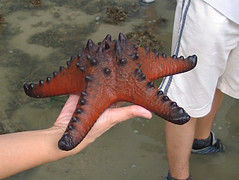
(The Knobbly Sea Star, Protoreaster nodosus)
The 2nd half of the guided walk was a tour round the island's landfill. This is where public education kick in hard. The message of 3 Rs (Reduce, Reused, Recycle) are emphasis.
NEA has spend some efforts to decorate the phase 2 area of the landfill for recreation purposes.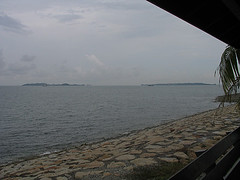
A shelter has oversees the Mindef Live firing area. Notice the 2 islands on the horizon?)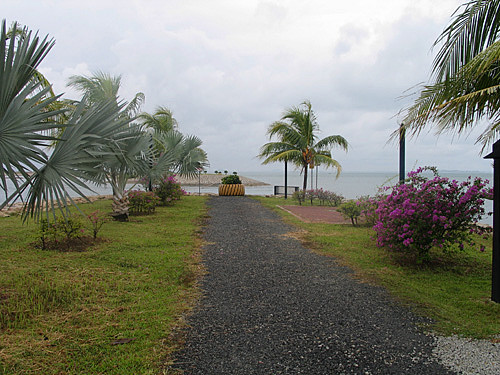
Last but not least, a great example of reuse and recycle. The used tire of a truck has been recycled into a flowerpot (see the yellow with black strip circular object at the edge of the road)
After this 1st OJT, I couldn't wait to join the group for my 2nd OJT and hopefully this time, I can complete the whole walk. :D
Thursday, June 21, 2007
1st OJT at Pulau Semakau
Posted by
JC
at
2:16 AM
![]()
Subscribe to:
Post Comments (Atom)

No comments:
Post a Comment